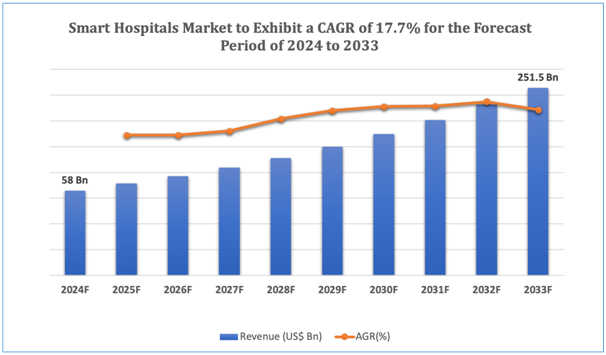Welcome to another exciting skill-building session, blockchain enthusiasts! I’m Maria Bennett, and today we’re diving deep into the fascinating realm of blockchain technology‘s market trajectory. If you’ve been wondering about the future of this revolutionary tech, you’re in for a treat as we explore projections through 2035 and develop practical skills to navigate this evolving landscape.
Understanding the Blockchain Technology Market Landscape
The blockchain technology market is experiencing unprecedented growth trajectories that would have seemed like science fiction just a decade ago. Currently valued at approximately $11.4 billion in 2023, experts project this figure to skyrocket to over $469.5 billion by 2035, representing a compound annual growth rate (CAGR) of over 34% during the forecast period.
But what’s driving this remarkable expansion? Let’s break it down:
- Financial sector adoption – Banks and financial institutions are increasingly implementing blockchain for secure, transparent transactions
- Supply chain revolution – Companies are leveraging blockchain for end-to-end supply chain visibility
- Healthcare transformation – Patient data security and interoperability solutions
- Government initiatives – Public sector blockchain implementation for transparent governance
- Smart contract proliferation – Automated, self-executing contracts reducing intermediaries
Challenge #1: Market Size Analysis – Blockchain
Before we proceed, let’s test your understanding. Based on the market projections above:
- If the blockchain market grows at exactly 34% CAGR, what would be its approximate value in 2030?
- Which sectors do you believe will see the highest blockchain adoption rates by 2035?
- What potential roadblocks might slow this projected growth trajectory?
Take a moment to calculate and consider these questions before continuing.

Regional Blockchain Development Patterns
The global blockchain landscape isn’t developing uniformly. North America currently holds the largest market share at approximately 36%, powered by major technology hubs in Silicon Valley, New York, and Toronto. However, the Asia-Pacific region is experiencing the fastest growth rate, with countries like China, Japan, Singapore, and South Korea making substantial investments in blockchain infrastructure.
Europe follows closely behind, with particularly strong development in countries like Switzerland, Germany, and the UK, where regulatory frameworks are evolving to accommodate blockchain innovation while protecting consumers.
Challenge #2: Regional Strategy Development – Blockchain
Imagine you’re launching a blockchain startup. Based on regional development patterns:
- Identify your optimal headquarters location and justify your choice
- Develop a strategy for expanding into a second regional market
- Outline potential regulatory challenges in each region and how you’d address them
Blockchain Technology Applications Through 2035
The applications of blockchain technology are diversifying at a remarkable pace. Let’s explore some projections for key sectors:
Financial Services (2023-2035)
The financial sector will likely remain the primary blockchain adopter, with decentralized finance (DeFi) platforms projected to manage over $800 billion in assets by 2030. Central Bank Digital Currencies (CBDCs) will become mainstream in at least 80% of major economies by 2035.
Smart contracts will automate approximately 40% of traditional banking processes by 2035, reducing operational costs by an estimated 30-40% and dramatically improving transaction speeds.
Supply Chain Management (2023-2035)
Blockchain will revolutionize supply chain transparency, with an estimated 65% of global supply chains incorporating blockchain elements by 2035. This will reduce counterfeiting by approximately 85% in sectors like pharmaceuticals and luxury goods.
Real-time tracking capabilities will optimize inventory management, potentially reducing excess inventory costs by 25-30% across industries.
Healthcare (2023-2035)
Patient data management on blockchain will create unified, secure health records accessible across providers while maintaining patient control. Clinical trials using blockchain verification will increase trial validity and potentially accelerate drug development timelines by 15-20%.
Challenge #3: Application Innovation
Time to get creative:
- Develop a blockchain application concept for an industry not covered above
- Outline its key functionalities and benefits
- Project its potential market impact by 2035
- Identify technical challenges in implementation
Take 10 minutes to brainstorm before continuing.
Technical Evolution of Blockchain Through 2035
The blockchain technology we know today will evolve significantly over the next decade. Here are key technical developments we can anticipate:
Scalability Solutions (2023-2027)
Early generation blockchains like Bitcoin process approximately 7 transactions per second (TPS), while Ethereum manages around 15-30 TPS. By 2027, layer-2 solutions, sharding implementations, and new consensus mechanisms will enable mainstream blockchain networks to process 100,000+ TPS, rivaling traditional payment networks.
Energy Efficiency (2023-2030)
Proof-of-Stake and other energy-efficient consensus mechanisms will become standard. Energy consumption per transaction is projected to decrease by over 99% compared to early Proof-of-Work systems, addressing one of blockchain’s most significant criticisms.
Interoperability (2025-2032)
Cross-chain protocols will create seamless asset transfers between previously isolated blockchain networks. By 2032, we’ll likely see a standardized interoperability framework adopted by over 80% of major blockchain platforms.
Quantum Resistance (2028-2035)
As quantum computing advances, blockchain protocols will implement quantum-resistant cryptographic algorithms to maintain security integrity. This transition will represent one of the most significant technical overhauls in blockchain history.

Challenge #4: Technical Problem Solving
Consider these technical challenges:
- A major blockchain network experiences a 51% attack. Design a security protocol that could prevent this vulnerability.
- Blockchain storage requirements are growing exponentially. Propose a solution that maintains data integrity while reducing storage needs.
- Design a user interface that would make blockchain interactions intuitive for non-technical users by 2035.
Blockchain – Regulatory Landscape Evolution Through 2035
The regulatory environment for blockchain will undergo dramatic transformation:
2023-2026: Regulatory Framework Establishment
Most major economies will establish comprehensive regulatory frameworks specifically for cryptocurrencies and blockchain applications. These will focus on consumer protection, anti-money laundering compliance, and security token offerings.
2026-2030: International Standardization
We’ll see efforts toward international regulatory harmonization, reducing compliance complexity for global blockchain operations. A “regulatory passport” system may emerge, allowing compliant blockchain businesses to operate across multiple jurisdictions with minimal additional requirements.
2030-2035: Mature Regulation
Blockchain regulation will mature into specialized domains with unique frameworks for DeFi, non-fungible tokens (NFTs), decentralized autonomous organizations (DAOs), and other blockchain applications. Regulatory technology (“RegTech”) built on blockchain will paradoxically help organizations maintain compliance.
Challenge #5: Regulatory Navigation
You’re advising a blockchain startup with operations in multiple countries:
- Design a compliance strategy that addresses current regulatory challenges
- Create a roadmap for adapting to regulatory changes through 2035
- Identify potential regulatory risks and mitigation strategies
Blockchain – Investment Trends and Opportunities Through 2035
Blockchain investment patterns will shift significantly:
2023-2026: Infrastructure Focus
Major investment will flow toward scalable blockchain infrastructure, interoperability solutions, and enterprise-grade applications. Venture capital funding in blockchain startups is projected to exceed $30 billion annually by 2026.
2026-2030: Industry-Specific Solutions
Investment will shift toward specialized blockchain applications for specific industries like healthcare, real estate, intellectual property, and government services.
2030-2035: Mainstream Integration
Investment will focus on seamlessly integrating blockchain with other emerging technologies like artificial intelligence, extended reality, and the Internet of Things.
Challenge #6: Investment Strategy
Develop an investment thesis for blockchain technology:
- Create a 5-year investment portfolio allocation across different blockchain segments
- Identify three promising blockchain technologies worth investing in for long-term growth
- Outline risk management strategies specific to blockchain investments
Final Challenge: Market Report Analysis
Congratulations on making it through our progressive challenges! For your final task, synthesize what you’ve learned by:
- Creating a comprehensive market projection for blockchain technology through 2035
- Identifying three potential “black swan” events that could dramatically alter these projections
- Developing contingency strategies for each scenario
As we wrap up today’s tutorial, remember that blockchain technology represents one of the most significant technological shifts of our generation. By understanding its market trajectory now, you’re positioning yourself to capitalize on countless opportunities in this rapidly evolving space.
What aspects of blockchain market development are you most excited about? Share your thoughts in the comments, and I’ll see you in our next skill-building session where we’ll tackle advanced blockchain development techniques!



